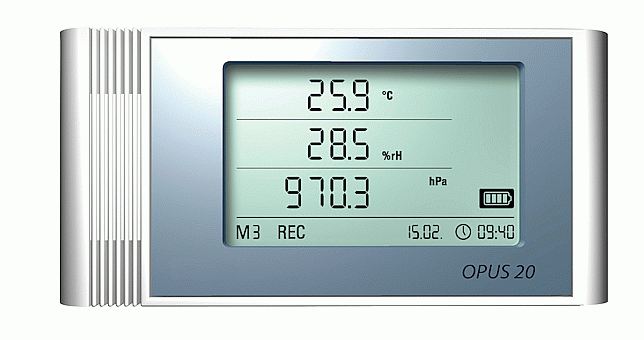 |
| Before you spend a lot of money determine what current conditions exist. A data logger can save you a lot of money. |
 |
| Talk to your HVAC specialist about ducting systems |
Stabilization: Restoration is a type of conservation. It refers to an attempt to bring a cultural property (your car) closer to its original appearance. Restoring a car means taking it back to the way it was originally constructed.
Conservation is slightly different. It should really be thought of as stabilization. Conservation is an attempt to maintain the integrity of a cultural property by minimizing deterioration. The primary goal of conservation and preservation is to prolong the existence of your car.
Cam Ingram, a partner in Rhode Scholars, sees more collections in a year than most of see in our lifetimes. Cam can tell you horror stores of really nice cars residing in buildings that are destroying the very cars they house.
 |
| Fans help a great deal. They're especially good if you have high ceilings. |
Cam feels that you really need to work with an expert on protecting your cars. Each collection space offers a set of challenges with humidity and temperature issues.
In many instances it's about finding a talented local HVAC person that can diagnose the collection space issues and remedy them accordingly. You can easily make an initial assessment of your storage space though.
In many instances it's about finding a talented local HVAC person that can diagnose the collection space issues and remedy them accordingly. You can easily make an initial assessment of your storage space though.
Temperature: You want to avoid extreme temperature fluctuations in your storage area. Your home garage may be the worst possible place to store a collectible car. Every time you open the door all sorts of bad things happen. The worst is the huge temperature swing. These temperature swings are the biggest problem with your home garage.
 |
| This has to be an absolute nightmare when it comes to climate control. It can be done but it's going to be expensive. |
The ideal temperature for preservation is around 64 degrees. How many days out of the year is your home garage at 64 degrees? How many degrees will your garage temperature change in a 24-hour period? The Philadelphia Museum of Art likes a range of 68-degrees to 72-degrees. That’s a four-degree variation over a month’s time.
Humidity: When there's not enough humidity leather can shrink, crack and become very brittle. Even worse mold can grow, and insects can breed, with high humidity. Leather is similar to brake fluid in that it’s hygroscopic (it absorbs and retains moisture). Leather can be damaged by both moisture loss and absorption. At a humidity level of 35% or below leather becomes desiccated and readily cracks when handled. At a humidity level of 70% or above mold growth can occur. This mold will break down the very structure of leather as it feeds off the proteins in the leather and on the fatty acids in the leather dressings.
 |
| Another facility that's going to get very expensive very quickly. The monthly electric bill alone will be daunting. |
When humidity reaches excessive levels rust develops on metal items. Most museums feel it’s important to keep the relative humidity below 55 percent in areas where they keep important metal artifacts. That should be good rule for your car’s storage area as well.
There’s not a lot of paper in you car but you might have books and photos in the same building where you store your car so you should probably consider that museums try to keep paper stored in locations that have around 35% humidity.
In an ideal world your cars should be stored in an area that has between 45% and 55% humidity. What’s more important though is that the humidity be consistent. Wild fluctuations will cause more damage than any given level.
Keeping Track of Things
There are some really inexpensive ways to measure and keep track of your humidity and temperature levels.
 Dial Hygrometer - These can be hung on a wall or mounted on a shelf. Most hygrometers don’t use a dial any more but they have a digital readout. Most also record temperatures. They measure temperature and humidity within 3 degrees and you can find them on Amazon.com for around $35.00. The only problem is these inexpensive ones don't record over time but they will give you minimum and maximum readings during the course of a day.
Dial Hygrometer - These can be hung on a wall or mounted on a shelf. Most hygrometers don’t use a dial any more but they have a digital readout. Most also record temperatures. They measure temperature and humidity within 3 degrees and you can find them on Amazon.com for around $35.00. The only problem is these inexpensive ones don't record over time but they will give you minimum and maximum readings during the course of a day. Data Logger – These are a step up from the basic model. They can record, display and download temperature and humidity information to a computer for analysis and tracking. A slightly more expensive option is to buy a unit that utilizes an SD card for recording. They cost around $200 and keep track of both temperature and humidity in an Excel file.
You should do all of this recording before you call in the HVAC specialists. Give them a status report as to where you are. Then explain that you want a humidity level between 45% and 55%. You also want a stable temperature within the 68 to 72 degree range. The first step though is to determine where you actually are. Then you try to close the gap between that number and where you should be. That’s when you have to get your checkbook out.
As Published in:
